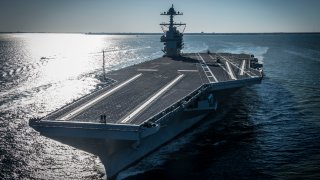
The importance of aircraft carriers in military history cannot be overstated.
Aircraft carriers helped the United States win key naval battles in World War II, especially in the Pacific Theater. In the decades after World War II, aircraft carriers gave the United States the ability to project its military power across the globe. But advances in naval warfare could unseat the role of the aircraft carrier.
"If you want to operate aircraft carriers, you need a whole lot of high-end technology to be able to defend it," said David Larter, a naval warfare reporter for Defense News. "It's been the advancement in anti-ship cruise missiles that can be launched from land. It's been advancements in cruise missiles launched from bombers or fighters that just pose an enormous threat."
Aircraft carriers are expensive, and losing one to a drastically cheaper anti-ship missile would be an unmitigated disaster. The latest carrier in the Navy, part of what's called the Ford class, costs $12.8 billion per ship, and that's before the costs of aircraft flying off the deck, fixing new technology, and operating the carrier in the high seas for months at a time.
Get Boston local news, weather forecasts, lifestyle and entertainment stories to your inbox. Sign up for NBC Boston’s newsletters.
The U.S. has more active aircraft carriers than every other country in the world combined. Expensive, massive and lethal, the aircraft carrier has been the cornerstone of American security for close to a century. But with advances in missile design, will it remain on top? Watch the video above to find out.




